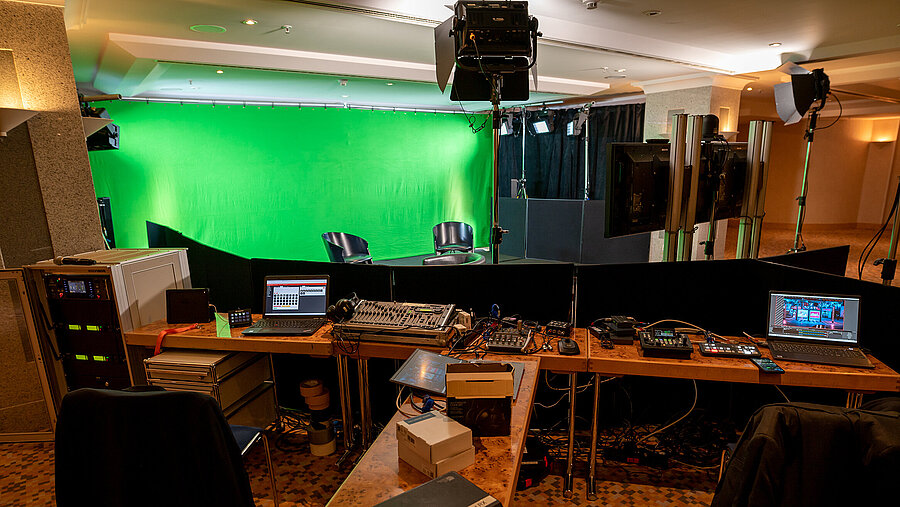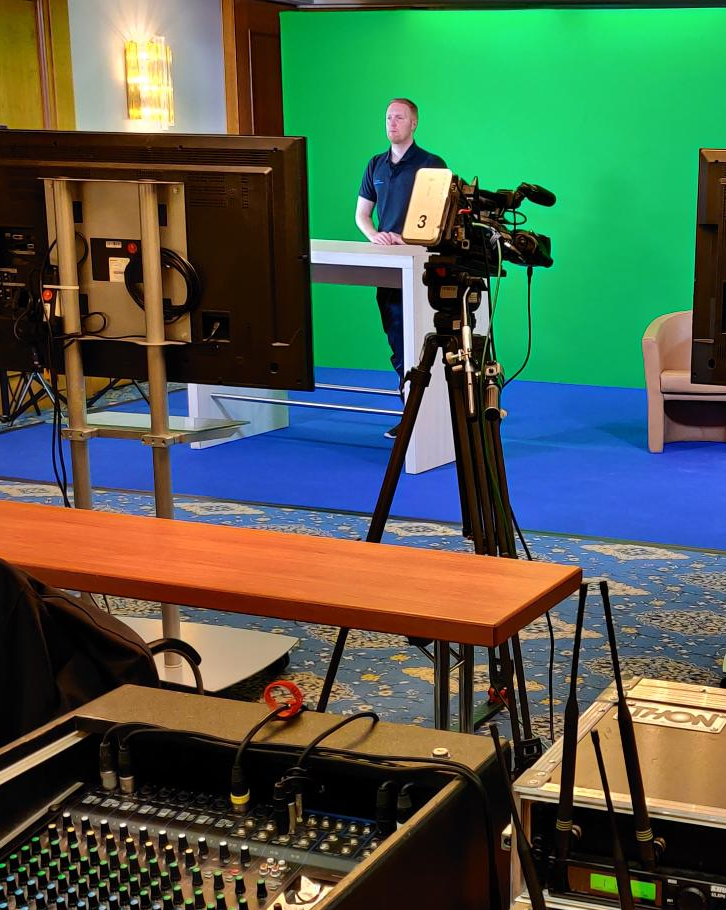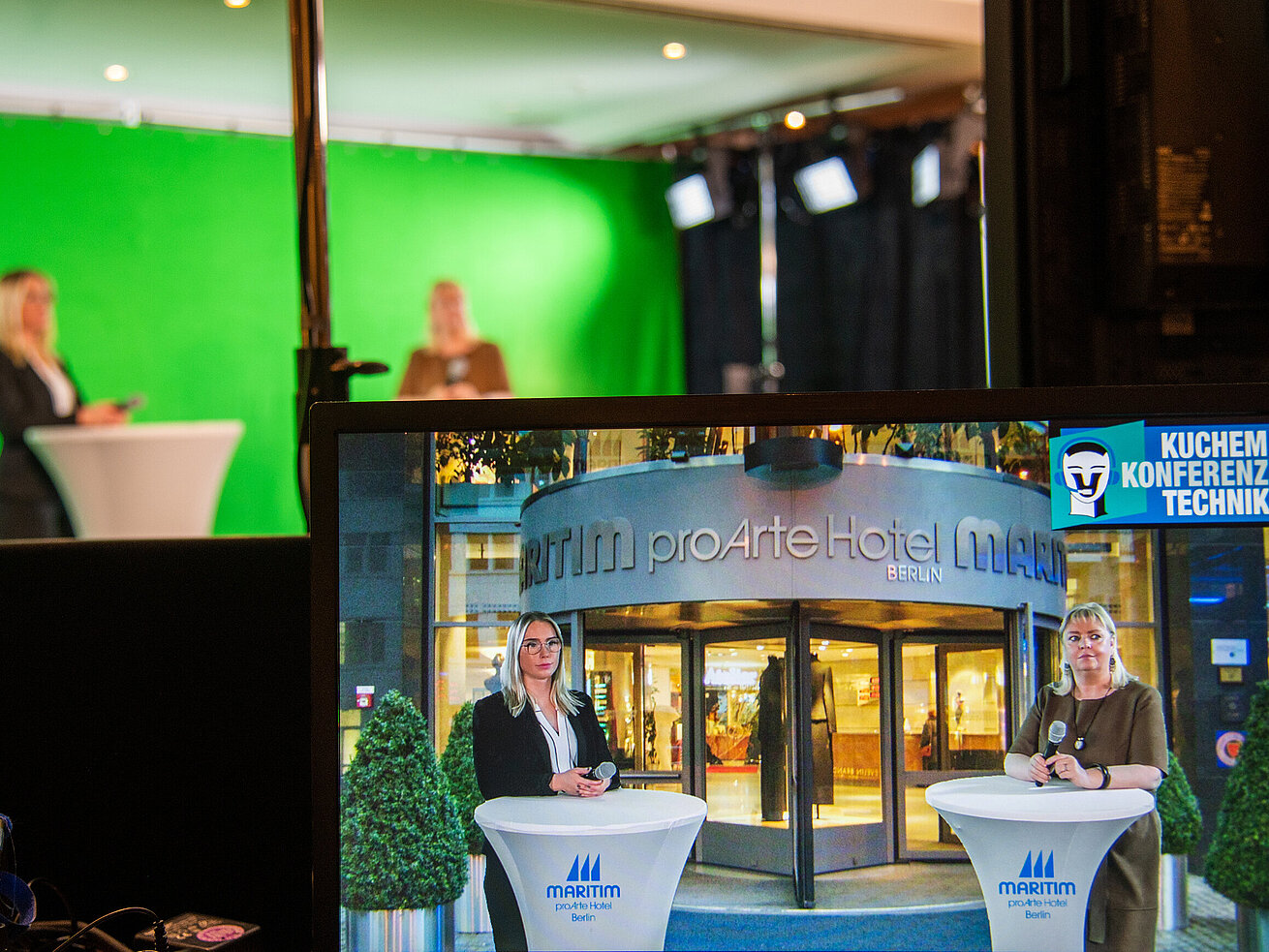Significantly more digital and hybrid events are being requested than before 2020. Although these event formats have been around for many years, they are only now experiencing a real boom. Unfortunately, the complexity of preparation and implementation is often underestimated. An event remains an event - regardless of whether it has participants live on site or not. Such formats also have to be professionally planned, implemented and followed up.
Below we have compiled some information and special tips for both event formats:
Examples of use for digital events:
- Lectures
- Presentations
- Discussion rounds / panel discussions
- Meetings
- Conferences / meetings
- Product presentations
- Trade fairs
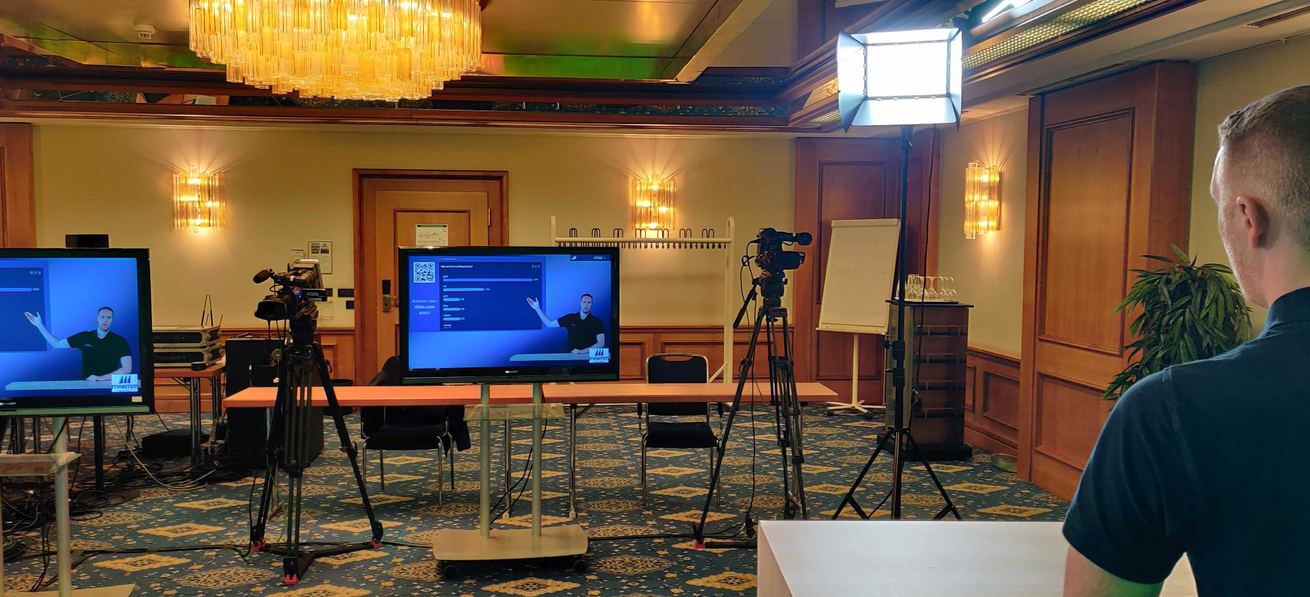
These are face-to-face events that are supplemented with digital elements - i.e. a combination of a classic event and a digital event (see above).
A limited number of participants take part in the event live on site - in the event room - and to a large extent via their respective devices (smartphones, laptops, PCs).
By combining a live event (presence) with streaming (digital), you definitely achieve a significantly higher reach and a greater interaction rate. The latter in particular can be further increased, for example, by using a wide variety of apps and matchmaking tools. Where appropriate, you can also integrate social media - before, during and after the event.
In any case, please note that a hybrid event is not just the transfer of a classic event to the internet. That would be too simple. The regularities of a live event must be supplemented by the needs of the digital participants. Here, for example, personal address and eye contact play a role that should not be underestimated. Especially the atmosphere and mood in the event room, which cannot be transferred 1:1 digitally, must first be "created" by the actors on stage, both through their appearance and their way of moderating or speaking to the spectators and listeners.
In terms of technical requirements, these events are of course also a combination of the technology needed for a live event and for a digital event. But here, too, the rule is: a lot doesn't help much. The technology selected and used according to your requirements or the objectives of your event, operated by competent event technicians, delivers the best possible result. We would be happy to advise you on this.
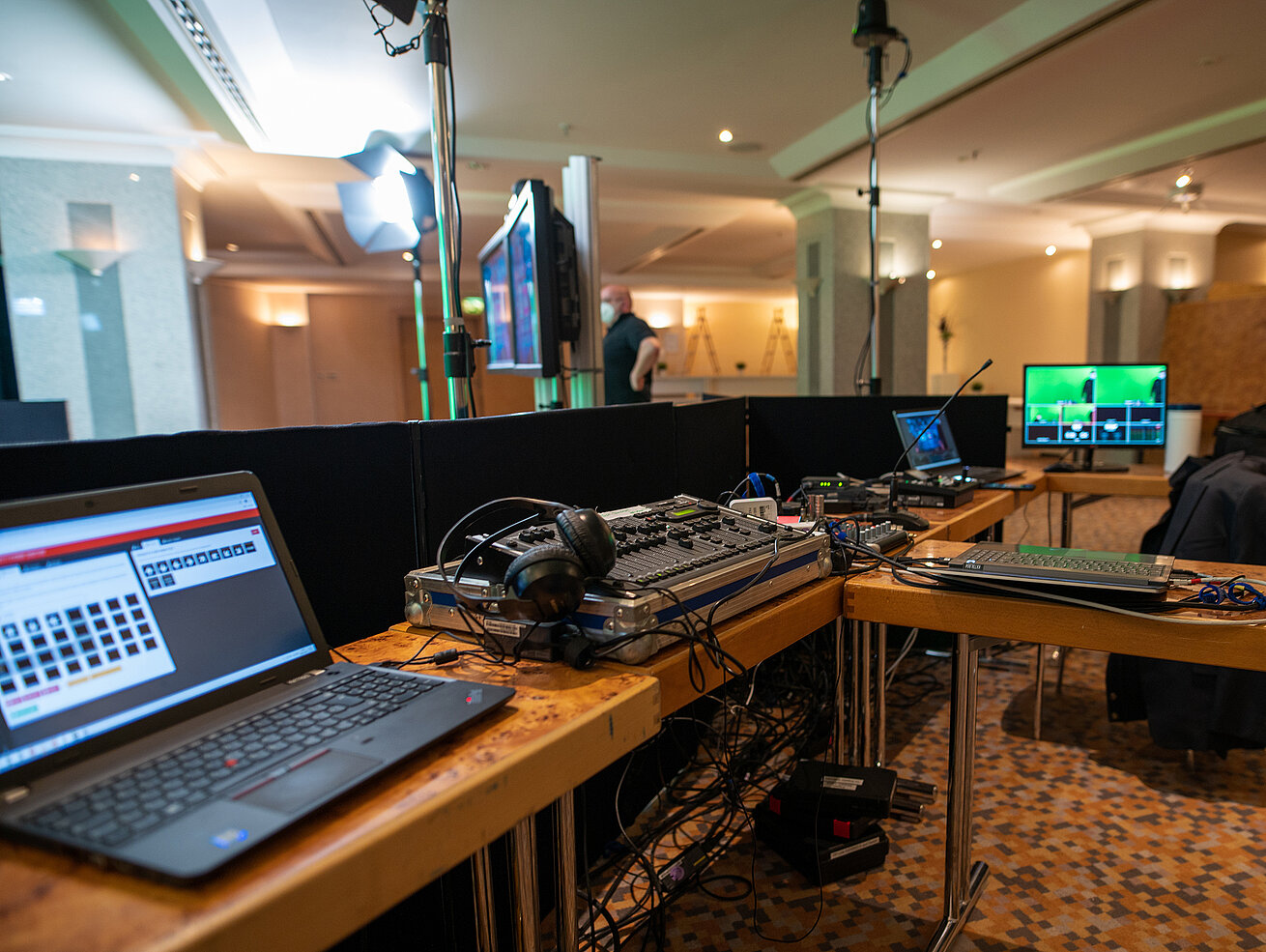
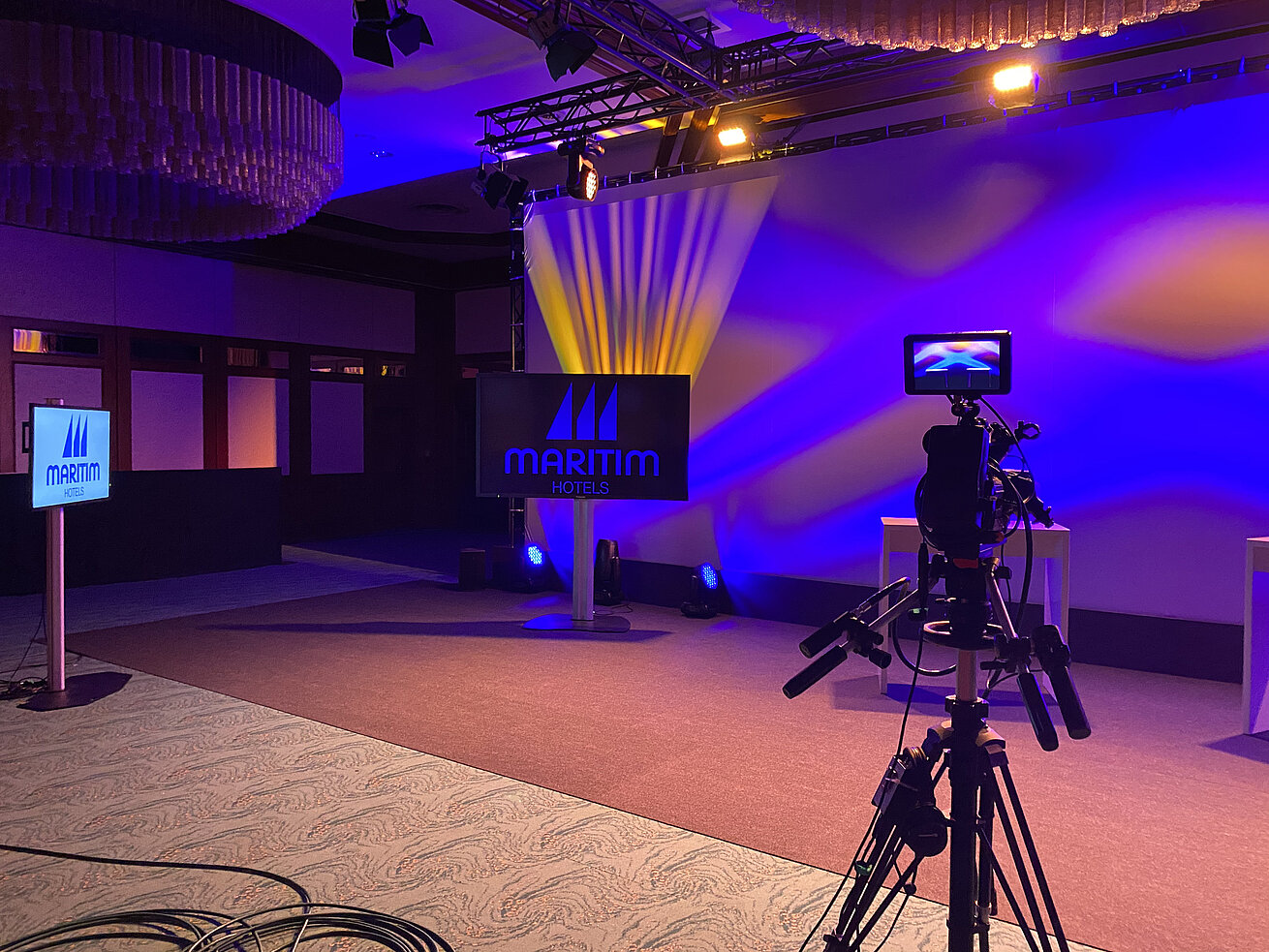
And if something doesn't work out, it's good to have a Plan B. Something unforeseen can always happen at a live event. Combined with digital elements, there are even more possibilities. In case, for example, a camera or microphone fails, the internet connection goes down or an actor on stage misses his cue, something should be prepared. In a hybrid event, this could be an image or a pre-produced trailer, for example.
Examples of use for hybrid events:
- General meetings
- Shareholders' meetings
- Party conferences
- Product presentations
- Congresses / Conferences
Actually, all classic events can also be offered on a hybrid basis.
Conclusion
Purely digital and hybrid events offer the perfect complement to the marketing and event mix. Due to their flexibly adaptable parameters (schedule, space requirements, number of participants, etc.), the possible higher reach as well as the greater interaction potential, they offer many advantages. Of course, they can only replace the advantages of personal communication and the experiential character of face-to-face events to a limited extent or not at all. Nevertheless, these event formats will also become more and more established.
No matter which event format you finally decide on - at Maritim your event is in the best hands. Together with our competent technical partners, we will be happy to advise you and make your event possible - with all participants live on site, hybrid or purely digital.
Current locations of Maritim Hotels that are already equipped with a fixed web studio:
- Maritim proArte Hotel Berlin
- Maritim Hotel Dresden
- Maritim Airport Hotel Hanover
- Maritim Hotel Köln


